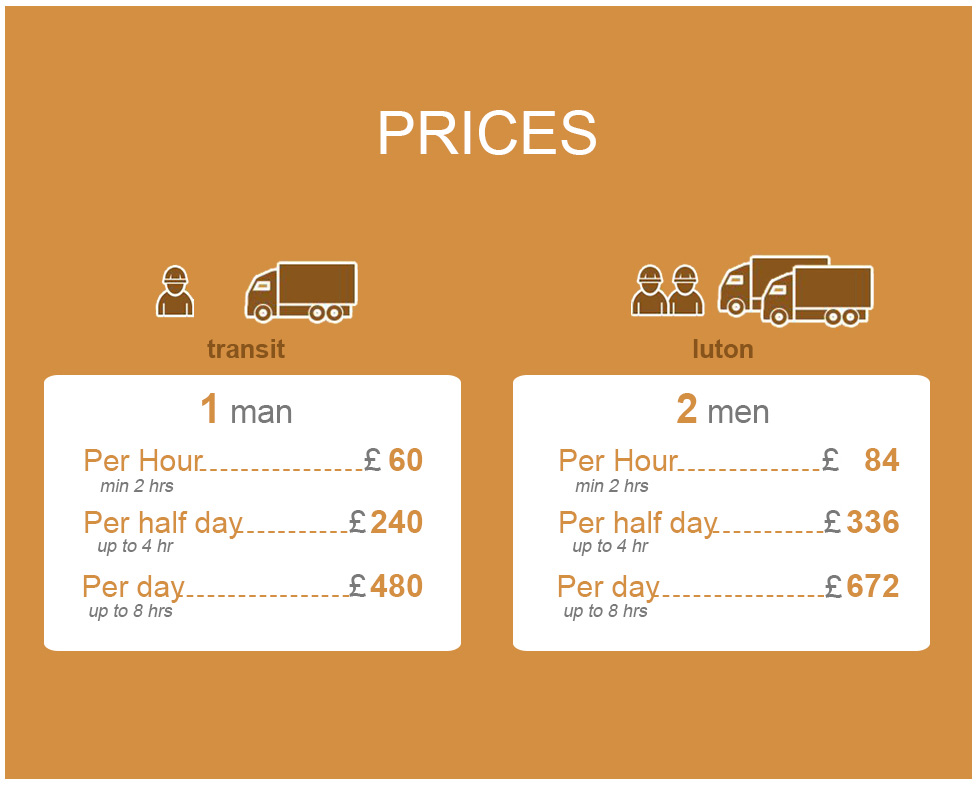Moving House with Ease: Your Ultimate Packing Guide
Posted on 22/05/2025
Moving House with Ease: Your Ultimate Packing Guide
Moving house is a transformative life event that opens up new opportunities and experiences. However, the process can sometimes feel overwhelming. Packing up everything you own and transporting it can seem daunting, but with the right strategies and organization, it becomes manageable. If you're planning a house move, this comprehensive guide will provide you with step-by-step packing tips, clever hacks, and crucial checklists to ensure your move is as smooth and stress-free as possible.
Whether you're a first-time mover, relocating across the country, or just changing neighborhoods, our ultimate packing guide for moving house will help you move with confidence and ease.
Why Efficient Packing Matters During a House Move
Packing for a house move isn't just about putting items into boxes. Efficient and strategic packing can:
- Save time both when you pack and unpack
- Reduce moving costs by minimizing the volume of your belongings
- Prevent damage to your valuable possessions
- Ease the transition into your new home
- Enable you to stay organized throughout the entire moving process
Properly planning your packing process will set the tone for a successful, stress-free move.

The Ultimate Packing Guide: Step-by-Step Strategies
1. Plan Ahead: Laying the Groundwork for an Easy Move
- Create a Moving Timeline: List major tasks and set deadlines, from booking movers to final cleaning. This will help you stay organized and avoid last-minute panics.
- Declutter Before Packing: Take this opportunity to sort and eliminate unwanted items. Donate, recycle, or sell what you don't need. Fewer items mean less to pack and reduced moving costs.
- Gather Packing Supplies: Ensure you have enough boxes in different sizes, packing tape, bubble wrap, packing paper, permanent markers, and specialty containers for fragile items.
- Prepare an Essentials Box: Set aside a box or bag containing the things you'll need immediately after the move, such as toiletries, a change of clothes, important documents, and chargers.
2. Smart Packing: Room-By-Room Approach
Packing a house for a move is best handled one room at a time. Follow these guidelines for maximum efficiency:
- Start with Least-Used Rooms: Begin packing in areas like guest rooms, basements, or storage closets. Leave everyday essentials for last.
- Organize by Category: Group similar items together (books, kitchenware, linens) to make unpacking simpler.
- Pack One Box at a Time: Avoid mixing items from different rooms in the same box. This will help with tracking, organization, and unpacking.
- Label Everything: Write the contents, destination room, and handling instructions (such as "fragile") clearly on each box. Consider using color-coded labels or stickers for quick identification.
- Weigh Boxes: Ensure boxes are not too heavy. Keep the weight under 50 pounds where possible to prevent injuries and make handling easier.
3. How to Pack Fragile Items and Valuables
Items like dishes, glassware, electronics, and artwork require special care when packing for a move:
- Wrap Individually: Use packing paper, bubble wrap, or soft towels to cushion breakables. Avoid leaving empty spaces in boxes to prevent shifting during transit.
- Use Specialty Boxes: Invest in dish packs, wardrobe boxes, or TV boxes for enhanced protection.
- Double Tape the Bottoms: Reinforce the base of boxes carrying fragile items with extra tape.
- Add Cushioning: Place a layer of crumpled paper or peanuts at the bottom and top of each box containing delicate possessions.
- Mark as Fragile: Clearly write "FRAGILE" on all sides of the relevant boxes and indicate which side should face up.
4. Disassembling Furniture and Packing Large Items
Large furniture can be tricky to move. Break down what you can for easier transport:
- Disassemble If Possible: Remove legs from tables, take apart bed frames, and detach shelves. Keep all screws and bolts in a labeled bag and tape it securely to the furniture piece.
- Wrap Furniture: Protect surfaces with moving blankets, pads, or shrink wrap to avoid scratches and dings.
- Keep Hardware Safe: Use small sealable plastic bags for fasteners, and tape them to the corresponding furniture.
5. Packing Clothes, Shoes, and Linens
- Wardrobe Boxes: Hang garments straight from your closet into specially designed wardrobe boxes to minimize creasing.
- Suitcases and Bags: Pack folded clothing, shoes, and linens into suitcases, duffel bags, or even laundry baskets to save on boxes and utilize available storage.
- Space-Saving Bags: Consider using vacuum-sealed bags for bulky bedding and off-season clothes.
6. Managing Electronics and Cables
- Original Packaging: If available, repack electronics in their original boxes for optimal protection.
- Take Photos of Cable Setups: Before unplugging, snap a picture of wiring configurations. This will make reconnecting devices much easier.
- Label Cables and Components: Use tags or colored tape to label cables and ensure you know what belongs to which device.
- Wrap Components: Bundle cables neatly and use soft padding to protect delicate gadgets.
7. Kitchen Packing: Tips for Pots, Pans, and Pantry
- Sort and Use Up: In the weeks before your house move, use up perishable food and toss expired items.
- Seal Pantry Goods: Place open containers in ziplock bags or plastic bins to prevent spills.
- Nest Items: Stack pots, pans, and mixing bowls to save space. Separate with packing paper or towels.
- Bundle Utensils: Group utensils and cutlery, and wrap them together in a towel or secure with rubber bands.
Essential Packing Supplies List for a House Move
Before you start, make sure you've gathered the essentials for a smooth packing process:
- Sturdy cardboard boxes in various sizes
- Plastic bins and specialty boxes (for artwork, mirrors, etc.)
- Packing tape and tape dispensers
- Bubble wrap, packing peanuts, and foam sheets
- Packing paper and newspaper
- Labels and permanent markers
- Scissors, box cutters, and utility knives
- Stretch wrap for furniture and mattresses
- Ziplock bags for hardware and small items
- Moving blankets or towels for padding
Eco-Friendly Packing Options
If you want to move house sustainably, consider the following alternatives:
- Reuse boxes from friends, local stores, or online community groups
- Rent reusable plastic crates
- Use towels, blankets, and clothing as padding instead of bubble wrap
- Choose biodegradable packing materials
Expert Tips for an Easy and Stress-Free House Move
- Start early: The earlier you begin, the less rushed you'll feel.
- Pack little and often: Avoid burnout by packing a few boxes each day in the weeks leading up to your move.
- Enlist help: Ask friends or family members for assistance, or consider hiring professional packers for efficiency.
- Keep important documents safe: Pack passports, legal papers, lease agreements, and financial documents separately, and carry them with you during the move.
- Arrange pet and childcare: On moving day, having pets and kids looked after off-site can greatly reduce stress and distractions.
- Do a final walkthrough: Double-check every room, cabinet, and closet before leaving to ensure nothing is forgotten.
Common Packing Mistakes and How to Avoid Them
Even with the best intentions, mistakes can happen. Here are some pitfalls to avoid during your house move packing:
- Procrastinating: Waiting until the last minute leads to chaos and errors.
- Overfilling boxes: This makes boxes difficult to lift and prone to breaking.
- Poor labeling: Unlabeled boxes cause confusion and slow down unpacking.
- Ignoring insurance: For long-distance or international moves, make sure highly valuable items are insured.
- Packing forbidden items: Movers typically won't transport hazardous materials, perishables, or plants. Check with your moving company for restrictions.
Unpacking and Settling Into Your New Home
Packing to move house successfully is only half the battle. Once you've arrived at your new place, follow these tips for a seamless transition:
- Unpack essentials first: Start with the kitchen, bathroom, and bedrooms so you can live comfortably while you unpack the rest.
- Work room by room: Tackle one room at a time to stay organized and avoid creating clutter everywhere.
- Dispose of packing materials responsibly: Recycle boxes, reuse bubble wrap, or give packing materials away via community groups.
- Settle children and pets: Introduce them to familiar items right away and keep routines consistent to reduce anxiety.
- Update your address: Notify banks, utilities, doctors, and friends about your new address as soon as possible.

Packing for a House Move: Your Frequently Asked Questions
How far in advance should I start packing for a move?
Ideally, start 4-6 weeks before your moving date. Begin with non-essentials and seasonal items, working towards everyday necessities as moving day approaches.
Is it better to use professional packers or to pack myself?
It depends on your budget, timeline, and preferences. Hiring professional packers can save time and reduce stress but costs more. Packing yourself gives you more control and can save money.
How can I keep my move eco-friendly?
Reuse and recycle boxes, choose biodegradable materials, and use towels or blankets instead of bubble wrap. Consider donating items you no longer need instead of throwing them away.
What should I not pack when moving house?
Avoid packing flammable, corrosive, or perishable items. Check with your moving company for a list of prohibited goods.
How do I prevent damage during my house move?
Use quality packing materials, wrap items well, pad boxes, and avoid overfilling. Always label fragile boxes and stack heavier boxes on the bottom.
Conclusion: Make Your Next House Move a Breeze
Moving house doesn't have to be stressful. With strategic planning, the right supplies, and organized packing, you can ensure your transition is smooth, your belongings are safe, and your first days in your new home are enjoyable.
Remember, the secret to a successful house move is preparation. By using this ultimate packing guide, you'll be ready for every step--from the first box packed to the last item unpacked. If you keep a positive mindset and follow these expert tips, moving house can be an exciting and even enjoyable process.
Happy moving! If you found our guide to packing for a house move helpful, share it with friends and family getting ready for their own relocation adventure!




